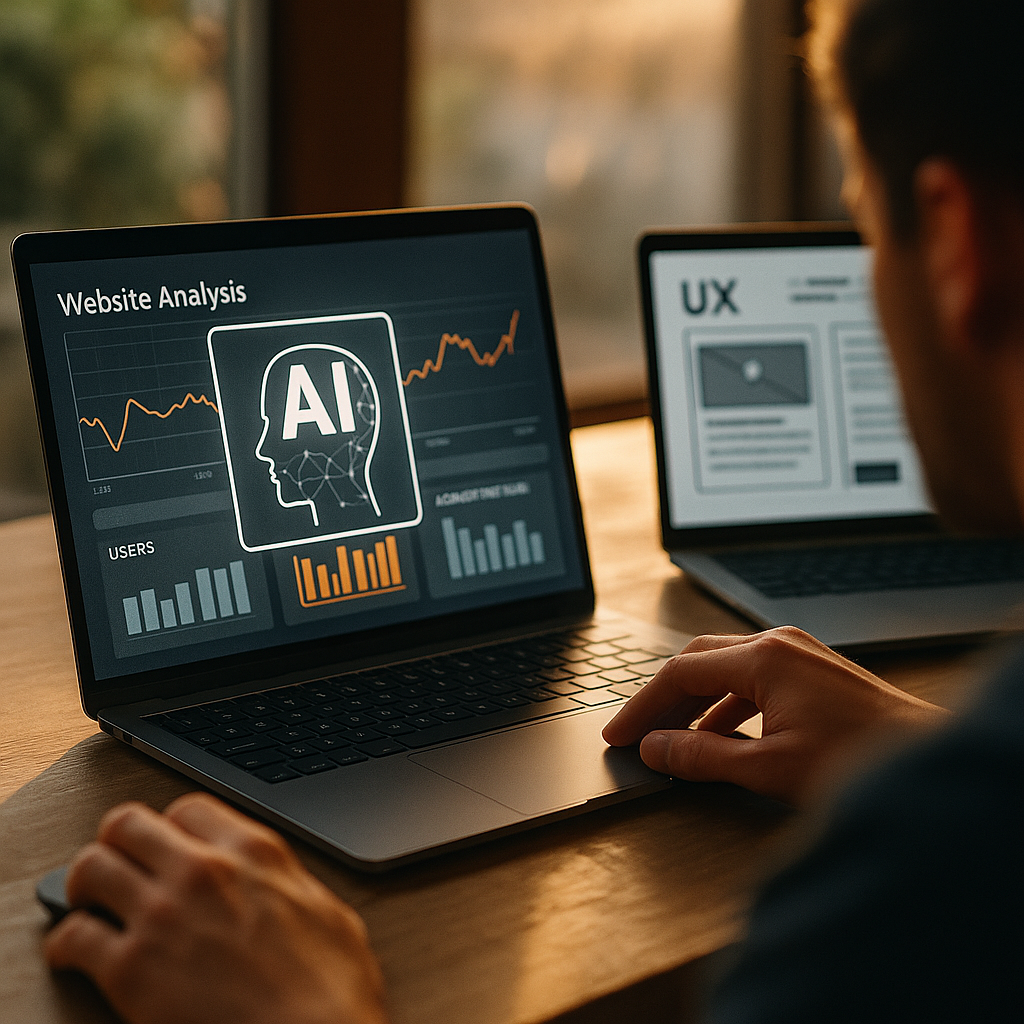Using AI to analyze and optimize your website’s UX and information architecture can dramatically improve user satisfaction, retention, and conversion rates. With AI’s cutting-edge capabilities, you can pinpoint friction, reveal hidden trends, and unlock actionable insights. Ready to learn how to transform your website experience and boost your business performance? Keep reading to discover the essential strategies and tools.
What is AI-Driven Website UX Analysis?
Artificial Intelligence is redefining website UX analysis by automating data collection, pattern recognition, and user journey mapping. Traditional approaches involve labor-intensive manual audits and subjective reviews. With AI, you gain continuous, objective oversight. AI-powered tools, such as session analytics, behavioral heatmaps, and sentiment analysis, uncover exactly how visitors interact with your site in real time.
For example, AI can sift through thousands of user sessions and flag recurring usability issues, such as confusing navigation menus or slow-loading elements. By proactively identifying these obstacles, businesses can address problems before they impact conversion rates or user satisfaction. This results in faster improvement cycles, more relevant insights, and improved user trust.
How AI Enhances Information Architecture Optimization
Optimizing your website’s information architecture (IA) is vital for seamless navigation and user engagement. AI transforms this process by:
- Automated Content Classification: AI categorizes and tags website content by analyzing natural language, making site structures more logical and intuitive.
- User Flow Prediction: Machine learning identifies the most common visitor paths, highlighting where users become disoriented or abandon their journey.
- Adaptive Navigation: AI personalizes menus and internal links for different segments, tailoring experiences based on behavior patterns.
Recent research from Forrester (2025) indicates that sites leveraging AI for IA see up to a 35% increase in successful task completion rates. This not only improves efficiency for users but also streamlines the content update process for site owners.
Key AI Tools for UX Improvement in 2025
The right AI tools can elevate your UX and architectural strategy. Here are some top solutions making waves in 2025:
- AI Heatmapping Platforms: These track mouse movement, clicks, and scrolling, automatically pinpointing design elements that engage or frustrate users.
- Conversational Analytics Tools: AI-powered chat monitoring platforms identify common questions or complaints, signaling areas for improvement in content or navigation.
- Automated Session Replay: Advanced analytics recreate user journeys, highlighting drop-off points and hidden obstacles to conversion.
- Semantic Analysis Engines: Tools that analyze your site’s copy and metadata for clarity, consistency, and relevancy—essential for both users and search engines.
When deploying these tools, ensure they comply with privacy regulations and are configured to provide actionable—not just descriptive—insights.
Best Practices: Implementing AI for UX and IA Optimization
Adopting AI in your digital experience strategy requires thoughtful planning. Keep these best practices in mind:
- Set Clear Objectives: Define the user behaviors and business outcomes you wish to measure and optimize using AI insights.
- Combine AI With Human Insight: Blend automated findings with expert UX evaluation to validate recommendations and increase buy-in.
- Monitor Ongoing Performance: Establish regular AI-driven audits to ensure sustained improvements and adapt to evolving user needs.
- Prioritize Ethical Use: Choose AI platforms that respect user privacy and provide transparent interfaces for interpreting results.
Following these steps, you’ll harness AI as a trusted partner—augmenting creativity and expertise, rather than replacing it. Websites that take this hybrid approach are more agile, adaptive, and user-centric.
Measuring the Impact: KPIs and Continuous Improvement
Optimizing with AI must deliver measurable value. Track these essential KPIs to gauge your success:
- Task Success Rate: The percentage of users able to find information or complete tasks on their first attempt.
- Bounce Rate & Time on Page: AI quickly identifies anomalies and segments that need UX refinement.
- Navigation Efficiency: Metrics show how easily users traverse site hierarchies, with AI highlighting friction points.
- User Satisfaction: Sentiment analysis gauges positive and negative reactions, quantifying improvements in perceived value.
- Conversion Rate Optimization: Continuous AI feedback supports iterative A/B testing and personalized experiences that improve sales, sign-ups, or other key outcomes.
Maintain a feedback loop with stakeholders and users to validate results and guide further enhancements, making the process collaborative and transparent.
Conclusion: Harness AI to Power Up Your Website Experience
AI enables you to analyze and optimize your website’s UX and information architecture at unprecedented scale and depth. Integrating AI with expert oversight ensures data-driven, ethical, and effective outcomes. To stay ahead in 2025 and beyond, make AI a core part of your digital strategy and invest in continuous UX improvement.
Frequently Asked Questions
-
How does AI analyze website UX?
AI analyzes website UX by collecting vast user interaction data, then identifying patterns and pain points through machine learning, predictive analytics, and behavioral modeling. This approach quickly surfaces usability issues that might take months to unearth manually.
-
Can AI improve my site’s information architecture?
Yes. AI automates content classification, suggests better hierarchy structures, and predicts user flows. These enhancements make your site easier to navigate and more aligned with visitor needs, resulting in higher retention and engagement.
-
Is using AI for UX optimization cost-effective?
Long-term, AI-based UX optimization can significantly reduce the costs of manual audits while increasing the speed and accuracy of improvements. After initial tool setup and training, ongoing analysis is largely automated and scalable.
-
How do I get started with AI for my website?
Begin by identifying your primary UX goals and pain points. Choose AI tools tailored to your platform and user base. Integrate these tools into your workflow, then regularly review insights and combine them with human expertise for the best results.
-
Are AI-driven recommendations always accurate?
While AI is highly efficient at uncovering trends, it’s important to validate its recommendations with UX professionals and actual user feedback to ensure relevance and feasibility.
